Key takeaways:
- Understanding and aligning your nonprofit’s mission with funders is crucial for securing funding.
- Building strong relationships with donors and engaging them with heartfelt narratives fosters support.
- Competition for funding is intense, making adaptability, effective communication, and consistent engagement essential for success.
- Exploring diverse funding strategies, including earned income, enhances financial sustainability while achieving mission goals.
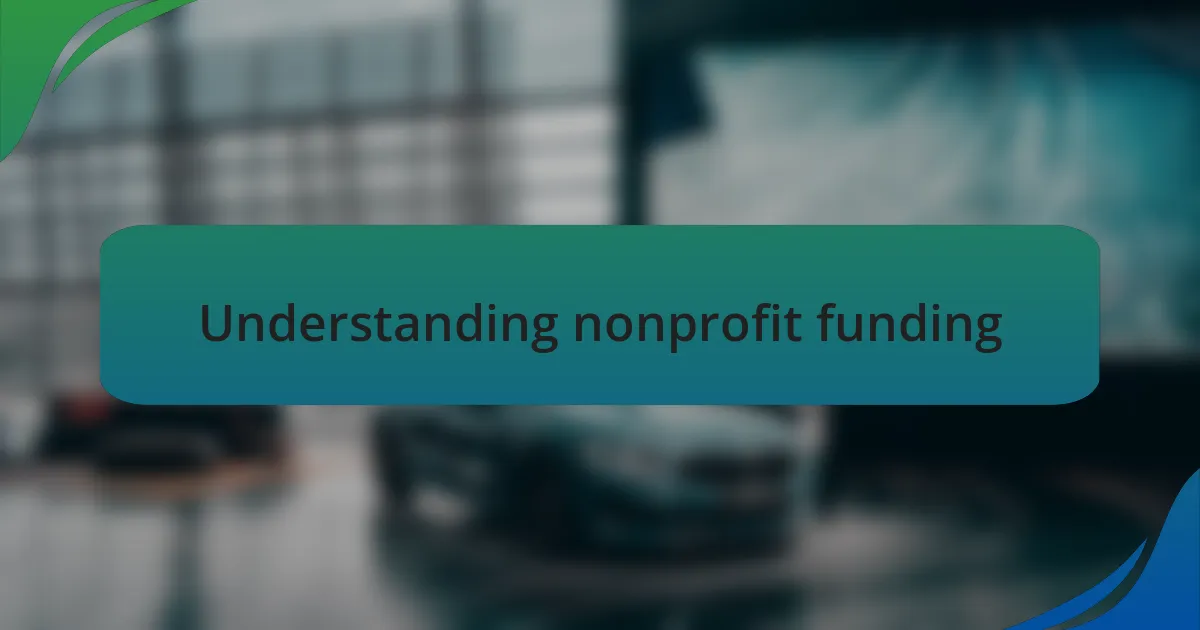
Understanding nonprofit funding
Understanding nonprofit funding can feel like navigating a maze. From my experience, it often requires abundant patience and a willingness to adapt. I remember the first time I applied for a grant; I felt overwhelmed by the jargon and the fine print. Why is it that funding often seems cloaked in complexity? The truth is, many nonprofit opportunities are wrapped in specific requirements that can change based on the funder’s mission or focus area.
Each funding source comes with its own set of expectations, and understanding these can determine your nonprofit’s success. I’ve found that aligning your mission with prospective funders is crucial. For instance, one of the funding applications I worked on emphasized community engagement in a way that resonated with my organization’s goals. This alignment made it easier to express our vision clearly, demonstrating not just our need for support but how the funder could impact lives directly through our initiatives.
Moreover, the emotional journey of seeking funding is often overlooked. I vividly recall the anxiety I felt while waiting for responses from funders, mixed with hope. It’s a rollercoaster of excitement and disappointment that can profoundly impact the entire team. Reflecting on that, I ask myself: How much resilience is required when pursuing nonprofit funding? It definitely taught me more about perseverance than I could have imagined.
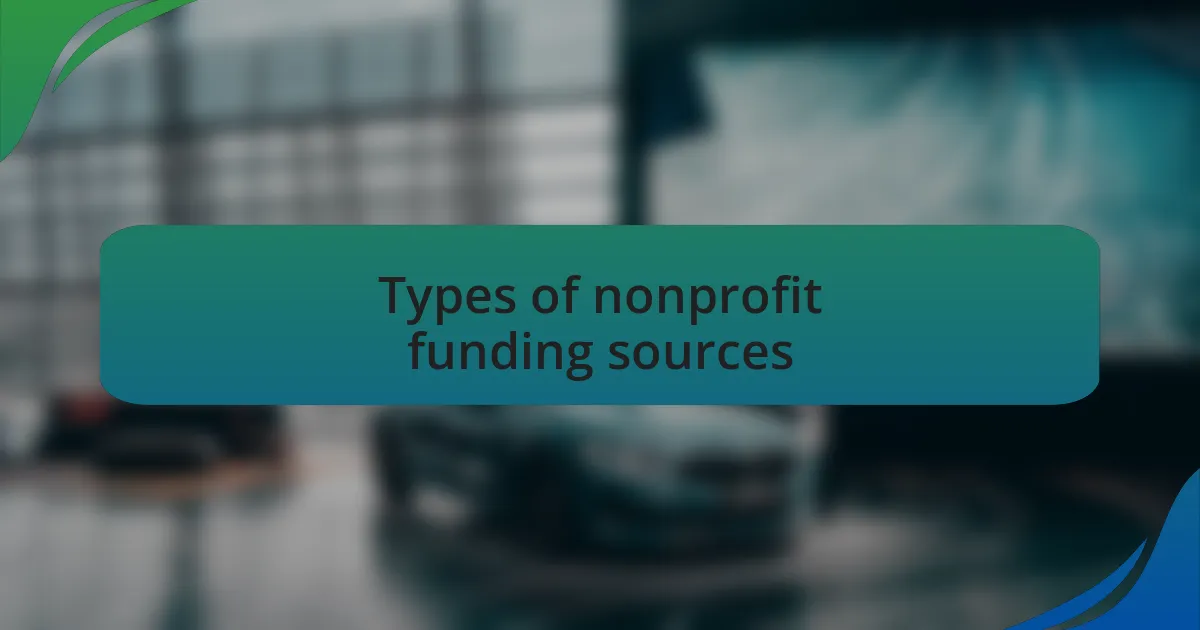
Types of nonprofit funding sources
Nonprofit funding sources generally fall into several key categories, each with its own nuances. For instance, grants from government agencies are often highly competitive but can provide substantial support. I recall one application that required extensive financial documentation; the process tested my attention to detail, but the joy of receiving the grant felt like a personal victory for our team.
In addition to grants, donations from individuals and corporations represent another vital funding source. I’ve engaged with many generous donors who are passionate about specific causes. Building those relationships takes time and authenticity—how do you convey the importance of your mission in a way that truly resonates with someone? It requires sharing heartfelt stories that demonstrate the real-world impact of their contributions.
Lastly, many nonprofits explore earned income strategies, such as selling products or services aligned with their mission. I once experimented with hosting workshops, which not only provided funds but also connected us more deeply with the community. This dual benefit made me reconsider: Is it possible for nonprofits to thrive both financially and missionally through these innovative approaches? Exploring various funding sources has truly opened my eyes to the potential of creative sustainability in nonprofit work.
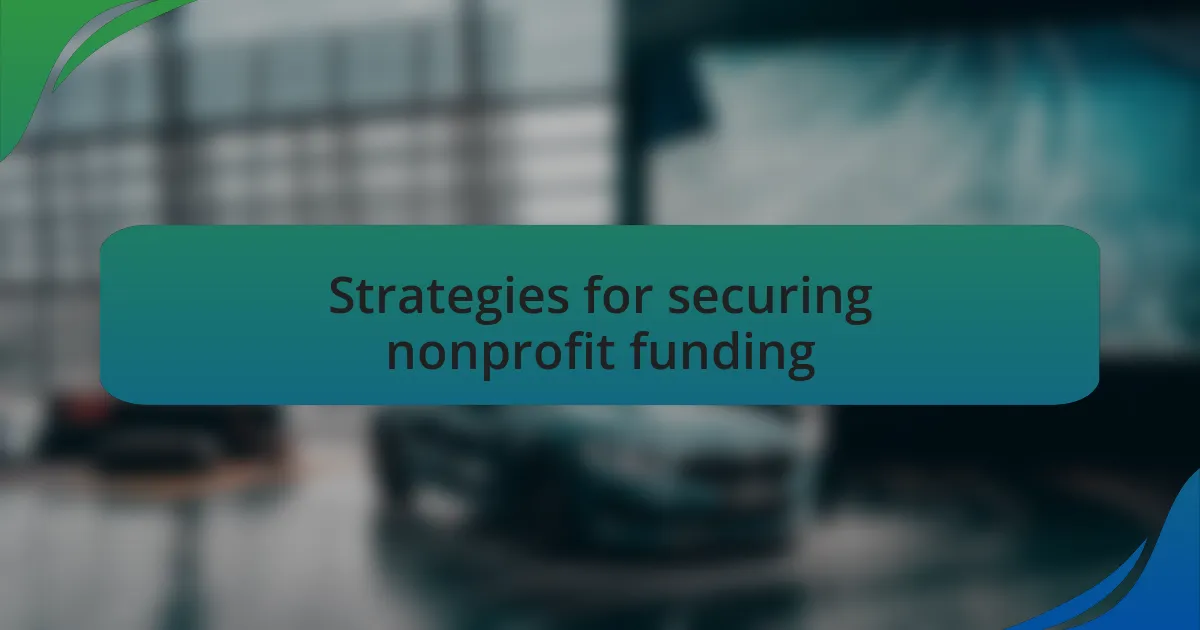
Strategies for securing nonprofit funding
When it comes to securing nonprofit funding, building a compelling narrative is key. I remember crafting a specific story around our mission that not only showcased our achievements but also illustrated the struggles we faced. Did you know that sharing your journey can transform potential donors into passionate advocates? Engaging their emotions makes funding feel less transactional and more like a partnership.
Networking is another fundamental strategy that I cannot stress enough. Attending industry conferences and local events not only helps in meeting like-minded individuals but also opens doors to funding opportunities that aren’t always visible. I once met a corporation’s CSR team at an event that ultimately led to a significant grant. It reinforced my belief that genuine connections can often lead to unexpected results—how often do we overlook simple conversations with potential funding partners?
Lastly, utilizing social media and online platforms can significantly amplify awareness. I had success with a targeted campaign that highlighted our impact over time, and I was surprised at how many people wanted to contribute after engaging with our content. Have you thought about how digital storytelling could enhance your organization’s visibility? In today’s world, connecting authentically online is just as vital as in-person interactions, creating a holistic approach to funding strategy.
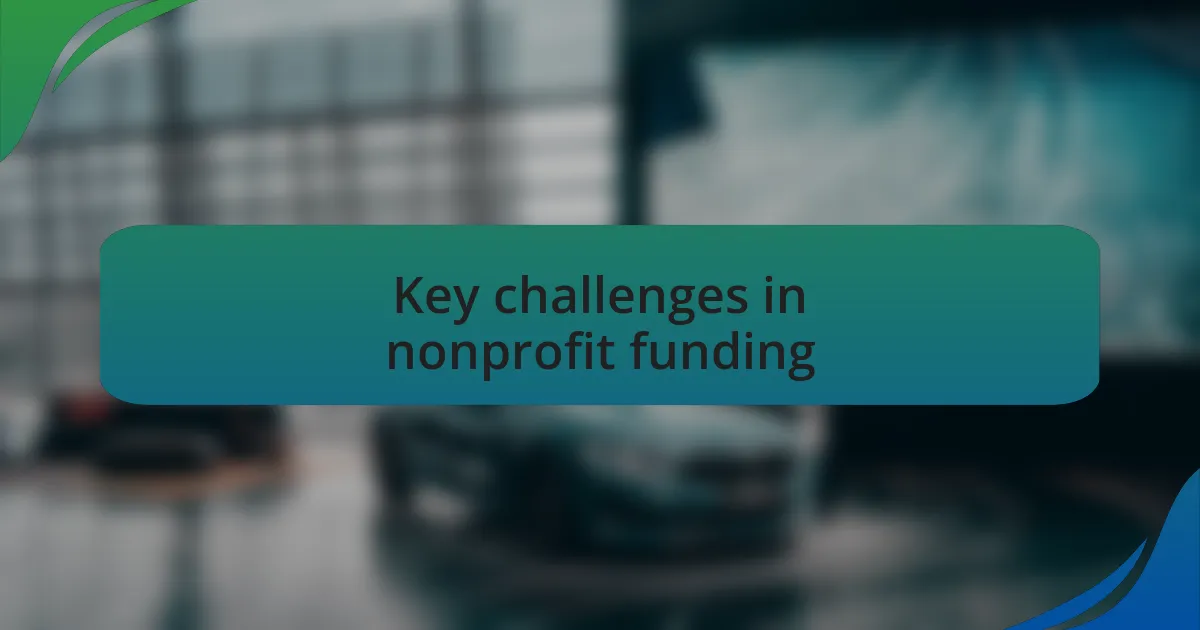
Key challenges in nonprofit funding
One of the key challenges in nonprofit funding is the intense competition for limited resources. I recall applying for a grant where hundreds of organizations were vying for the same pot of money. It was disheartening to realize that even the most compelling proposals could be overshadowed by others simply due to timing or a misalignment in priorities. How often do we find ourselves pouring our hearts into applications, only to feel like we’re shouting into the void?
Another significant hurdle is maintaining donor relationships. I’ve seen firsthand how easy it is to lose touch with donors once a project wraps up. Retaining that engagement is crucial, yet it often feels daunting—what do you say in your next update when the spotlight has moved on? I remember reaching out to an early supporter months after completion, only to discover they were surprised that we still valued their input. It was a lightbulb moment for me, highlighting the importance of ongoing communication in the nonprofit world.
Lastly, fluctuations in funding sources can create financial uncertainty. I experienced this firsthand when a reliable grant suddenly became unavailable. It forced our organization to pivot quickly, reassessing our budget and fundraising strategies. This kind of unpredictability can be nerve-wracking, but it also opens doors for creative problem-solving. How do you adapt when the carpet gets pulled out from under you? Embracing flexibility may turn a challenge into an opportunity for growth.
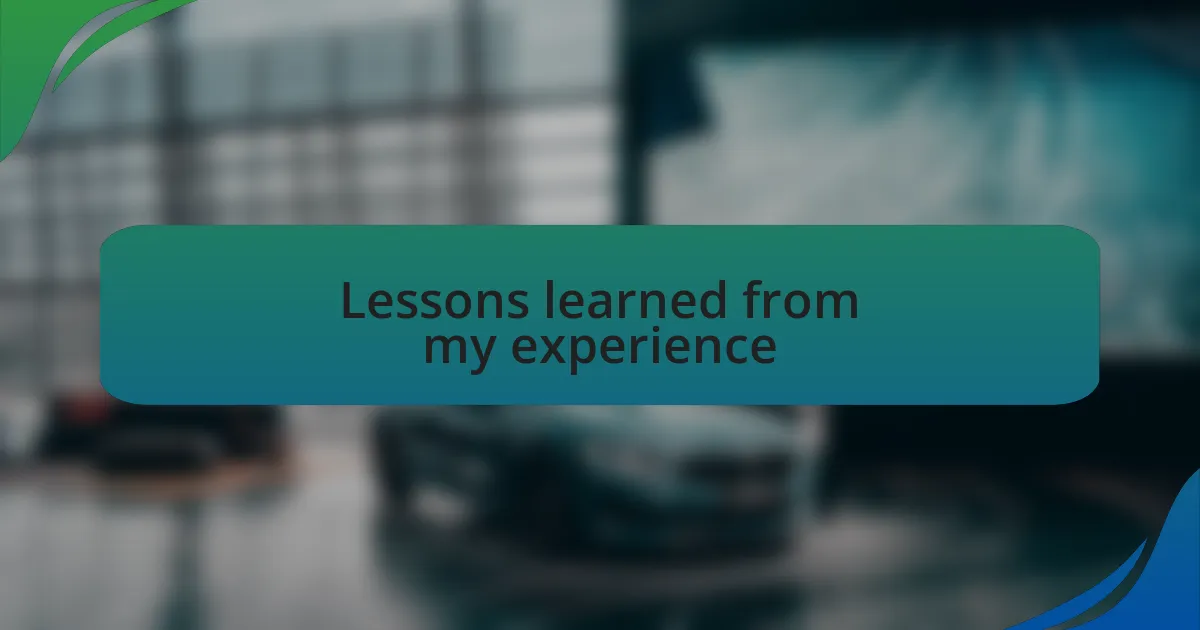
Lessons learned from my experience
One of the biggest lessons I learned is that adaptability is essential in the nonprofit funding landscape. There was a time when our team had to scramble to rewrite proposals on short notice because a grant’s guidelines had shifted unexpectedly. That experience taught me that staying nimble isn’t just advantageous; it’s a necessity. How often have you had to rethink your strategy in the face of change? It’s in these moments that I found real growth.
Communication can’t be overstated, either. I vividly recall an instance where our project’s success largely hinged on an unexpected update to one of our key donors. Instead of making assumptions, I reached out directly to share news and insights, which rekindled their passion for our cause. When’s the last time you engaged your supporters with meaningful updates? Keeping that connection alive fosters a sense of partnership that can lead to future support, and I regret any time I hadn’t prioritized that.
Lastly, consistency matters. I learned that developing a routine around grant applications and donor communications reduces the emotional rollercoaster of funding uncertainty. When I established a dedicated timeline for follow-ups and proposal submissions, it took a weight off my shoulders. Isn’t it fascinating how creating structure can relieve stress? Embracing consistency not only enhances my organization’s credibility but also helps build trust with funders who appreciate knowing they can rely on our engagement.